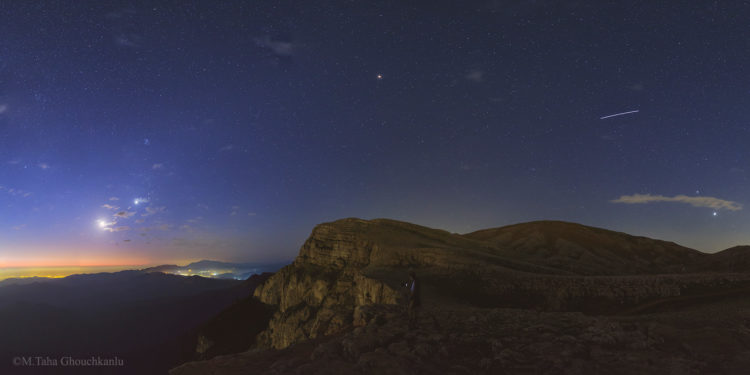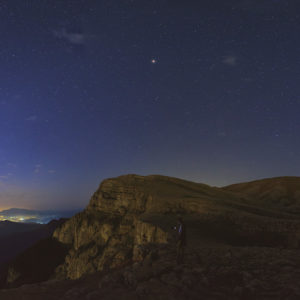Celestial Party
Description
How many celestial objects you can find in this nightscape? Seven? Maybe eight! You can follow them starting with the moon at the left. By drawing an arc from the moon along the right that shows the ecliptic path; Sun’s apparent annual movement around the celestial sphere and against the background stars, due to the Earth rotation. The bright spot beside the moon is Venus; the second brightest natural object in the night sky. Uranus, Mars and Neptune in the same line appear beside each other in the middle of the arc but many millions of kilometers separated in space. What about a line below Neptune? Maybe an airplane! No, it is the International Space Station. The ISS orbits Earth about 400 km above us, a habitable home for a few astronauts. And the two last bright spots at right are Saturn and Jupiter; the two largest gas giant planets of the Solar System. If you consider the earth beneath your feet, the participants of this celestial party are seven planets, one moon and one artificial satellite




comments (0)